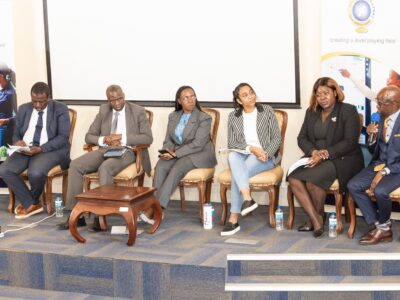Satellite internet is turning the tide on rural isolation offering a glimpse into a digitally inclusive future that is beginning to take shape across the continent.
Starlink’s expansion across Africa is rapidly shifting the continent’s digital landscape and the impact is more promising. As traditional infrastructure struggles to meet rural demands, satellite internet is emerging as a powerful equaliser, beaming high-speed connectivity into areas long left behind.
Zimbabwe joined the growing list of African countries licensed to operate Starlink in 2024, following approvals by POTRAZ. Local tech firm Dandemutande became the official distributor, and since then, dozens of rural institutions from clinics to remote schools have installed Starlink terminals, unlocking speeds that rival urban fibre networks.
By Ruvarashe Gora
Zimbabwe’s transformation is part of a wider continental trend. Since Nigeria became the first African country to launch Starlink in early 2023, at least 19 others have followed suit including Kenya, Malawi, Rwanda, Zambia, Benin, Ghana, Mozambique and the Democratic Republic of Congo. In Rwanda, for example, the government has partnered with Starlink to connect hundreds of schools in mountainous regions. In Nigeria, over 65,000 subscribers signed up in the first year alone.
Starlink addresses this head-on. Its low-Earth-orbit satellite network of currently more than 6,000 satellites requires no ground towers or fibre lines. A small dish, a clear view of the sky, and solar power are enough to bring a village online at speeds exceeding 100 Mbps.
Despite its promise, Starlink isn’t yet a mass-market solution. In Zimbabwe, a standard kit costs between US $600 and $700, and monthly subscriptions average around $50 well beyond the reach of low-income households. However, partnerships are beginning to ease the cost. NGOs, schools, and religious missions have started pooling resources to install shared Starlink terminals, particularly in education and healthcare settings.
Meanwhile, POTRAZ has expressed interest in incorporating satellite services into the national broadband strategy under the Digital Economy Framework. Analysts believe that with appropriate policy support such as community access models, subsidies, or tax relief Starlink could become a key component of Zimbabwe’s rural connectivity efforts.
With the world accelerating into an AI-powered era, digital exclusion carries new risks. Without reliable broadband, Zimbabwe’s rural learners cannot access online learning platforms. Farmers miss out on precision agriculture tools. Entrepreneurs are cut off from digital markets.
What’s more, as artificial intelligence becomes embedded in everyday services from health to education to commerce those without internet risk being left behind not just economically, but technologically and socially.
Starlink’s model flips this narrative. It delivers on the “leave no one behind” principle, not in theory but in practical, tangible ways by placing world-class internet in places where even 3G doesn’t work.
The future of connectivity in Africa more broadly will likely be a hybrid of terrestrial fibre, mobile broadband, and satellite solutions like Starlink. But for now, in villages where no cables have ever been laid and where towers are economically unviable, Starlink is more than a service, it’s a lifeline.
If supported with bold policies and local innovation, Zimbabwe could lead in showing how satellites can not only narrow the digital divide but rewrite it entirely.















Comments